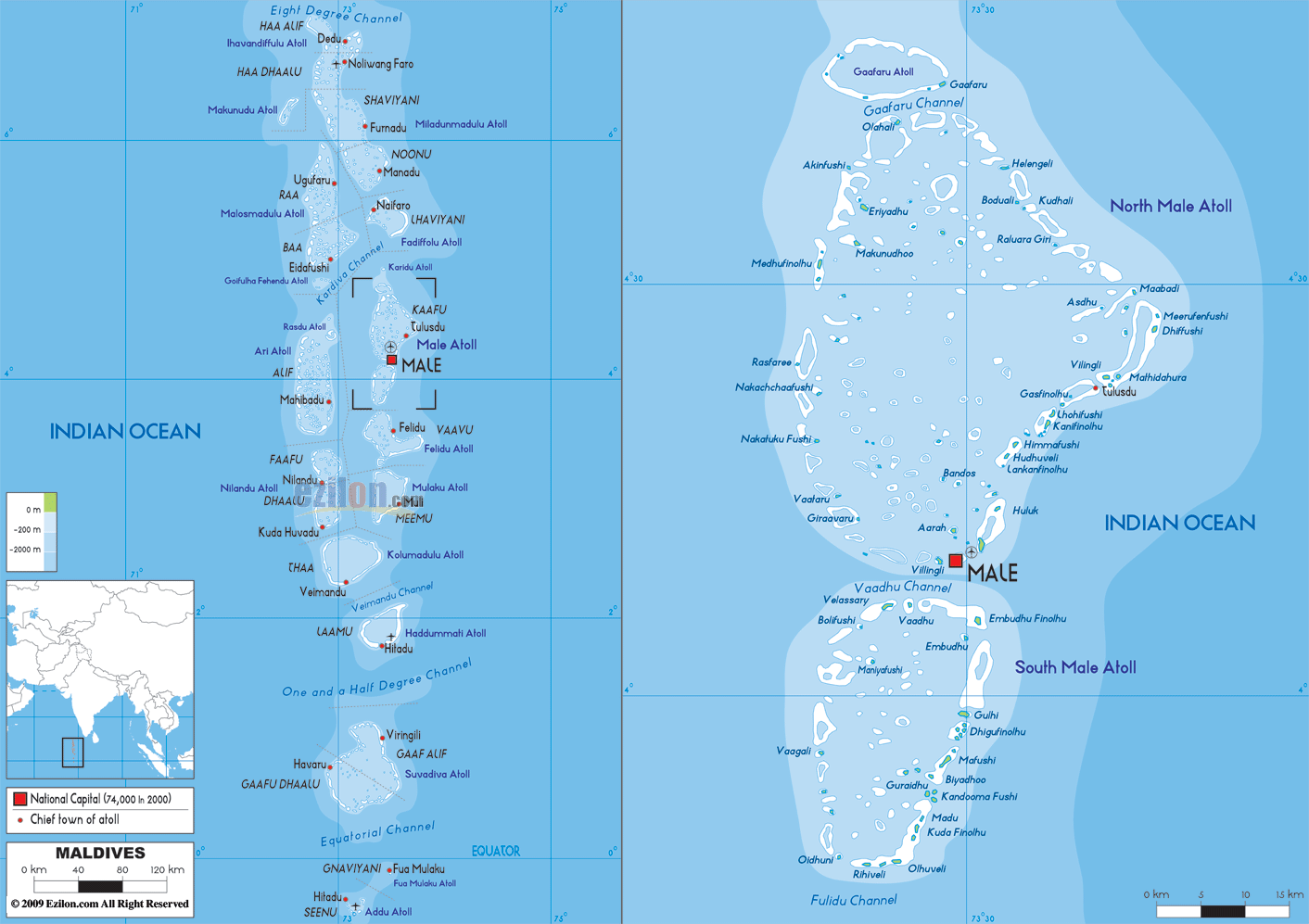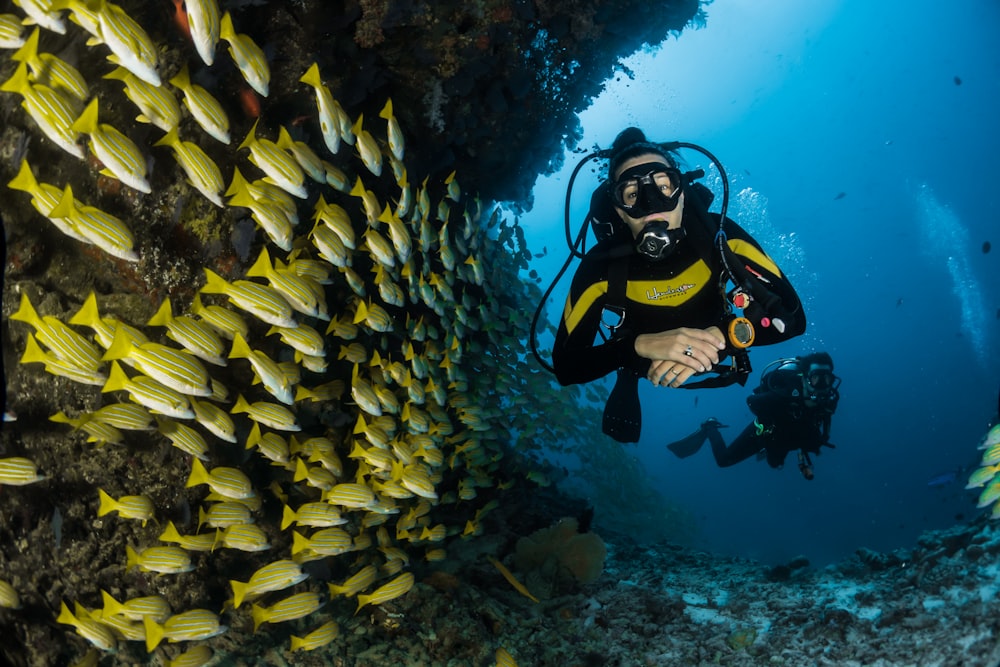Geography
Maldives, also known as Republic of Maldives, is an independent island country located in Arabian Sea and Indian Ocean. Its total area is roughly 90,000 square kilometers and under 1% of it is dry land (Visit Maldives, n.d). There are approximately “1,200 small coral islands and sandbanks grouped in clusters”, or ring-shaped atolls according to The Editors of Encyclopaedia Britannica (2020).

The Physical Map of Maldives showing major geographical features like elevations, ocean, lakes, plateaus, peninsulas, rivers, plains, landforms and other topographic features.
The local residents inhabited in only 200 islands, tourism activities take place in about 100 islands and the remaining atolls are unpopulated. Tourism Maldives describes their beautiful landscape as “The sunny side of life” featuring breadfruit trees, clear turquoise beaches, gorgeous lagoons, and colorful reefs where tourists come to relax and immerse themselves in the amazing underwater world. The Maldives is home to 450,000 inhabitants as well as 5% of the reefs on the planet including numerous of fishes and sea species (Visit Maldives, n.d). In 2020, Maldives awarded The World’s Leading Destination for the first time.
People and Culture
The Maldives’ population has been stably increasing up to 544,000 people in 2020 and is expected to slow down in the coming years. The majority of Maldivian resides in the capital Male’ occupying one third of the national population (World Population View, 2020). While there is limited existing information about the history of Maldivian people, it is believed that the nation settled around 2500 years ago (Visit Maldives, n.d). The Maldivians consider their island nation as a “a melting pot of people and cultures” thanks to the unique location through thousands of years of interactions with the diversity of people crossing over the Indian Sea. The culture is mainly influenced by Islam and Quran. National language is Dhivehi – a beautiful combination of Indo-Aryan language with its roots in Sanskrit (Visit Maldives, n.d).
Tourism Statistics
Tourism Maldives plays an important role in the national economy. Riyaza (2017) stated that the national economy experienced one of the most impressive and significant increase in history. The great contribution of tourism industry was undeniable in this growth.

According to the latest report published by Maldives Tourism Ministry (2019), the local residents are unlikely to travel within Maldives due to high resort prices and limited vacancies. However, the flow of foreign visitors never stop growing in the Maldives all year-round, as shown in the table below. Some biggest tourist markets of the Maldives include China, India, Germany, UK, USA, Japan, Italy, Russia, France and Australia.

References
Maldives Map – Physical Map of Maldives. (n.d) Ezilon. Retrieved from https://www.ezilon.com/maps/asia/maldives-physical-maps.html
Maldives Population 2020. (2020). World Population Review. Retrieved from https://worldpopulationreview.com/countries/maldives-population
Mia. (2018). The Maldives – The Land of Sun, Sea, and Sand. The Maldives Expert. Retrieved from https://www.themaldivesexpert.com/1594/the-maldives-the-land-of-sun-sea-and-sand/
The Editors of Encyclopaedia Britannica. (2020). Maldives. Britannica. Retrieved from https://www.britannica.com/place/Maldives
Tourism Yearbook 2019. (2019). Ministry of Tourism, Republic of Maldives. Retrieved from https://www.tourism.gov.mv/en/search/tourism%20yearbook%202019
Visit Maldives. (n.d). Visit Maldives. Retrieved from https://visitmaldives.com/en/maldives

